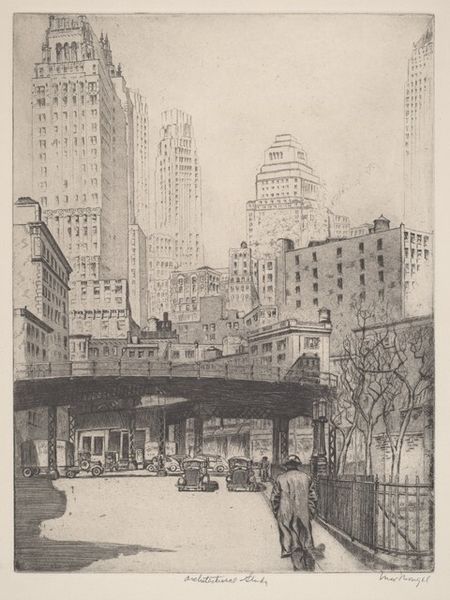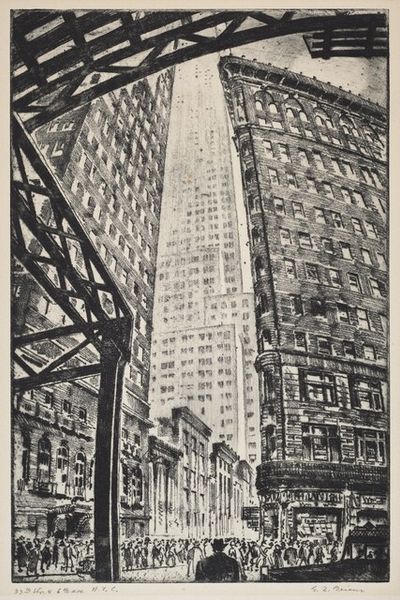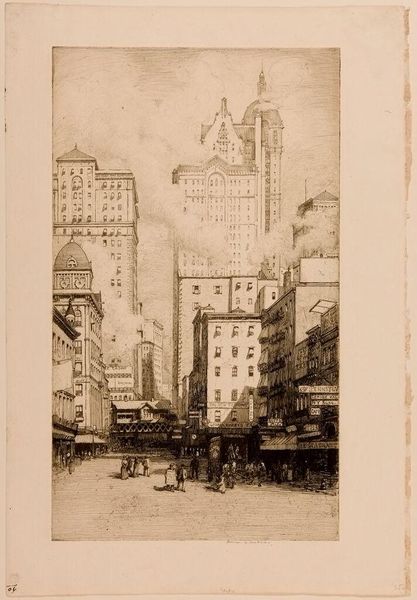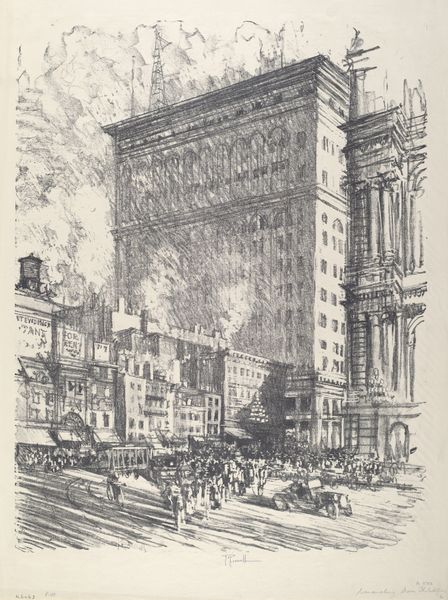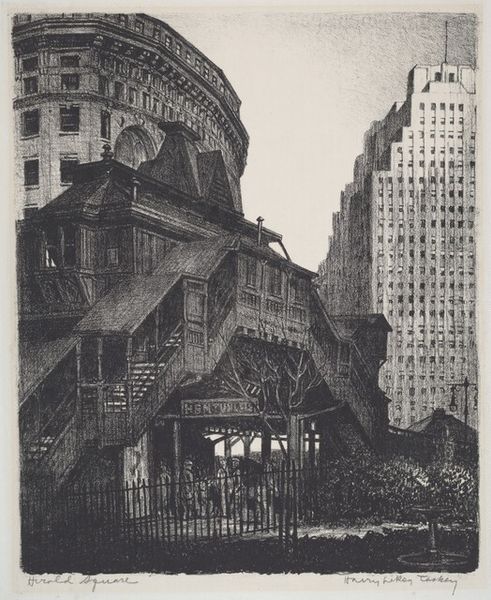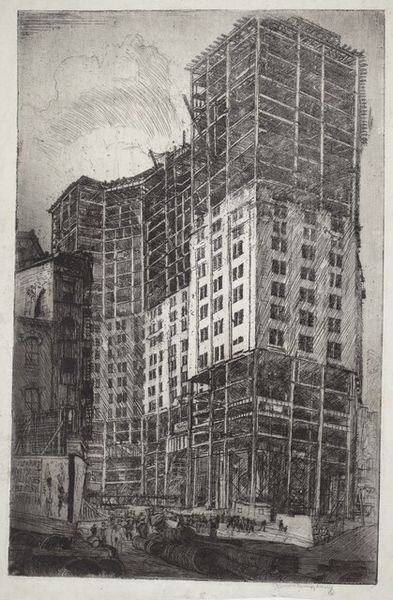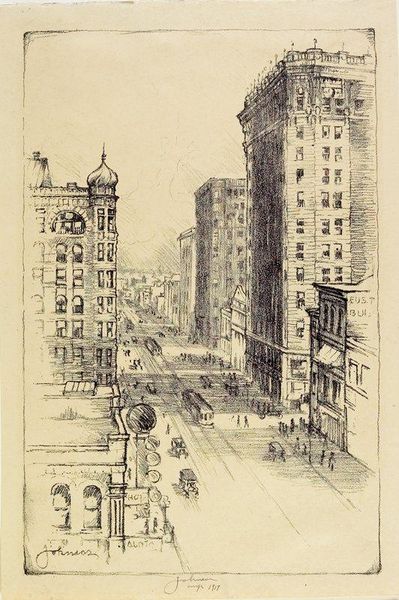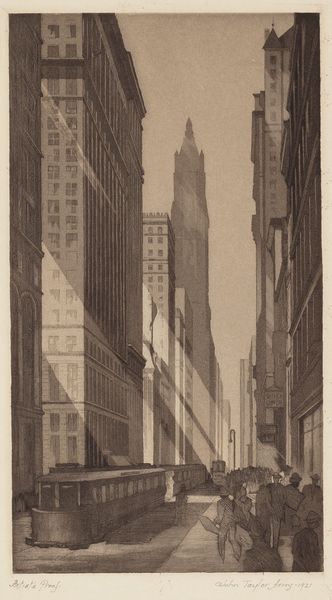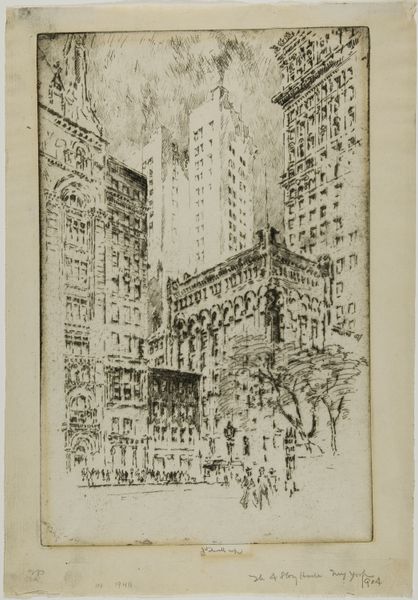
print, etching
# print
#
etching
#
cityscape
#
modernism
#
realism
Copyright: National Gallery of Art: CC0 1.0
Curator: What strikes me first is the sheer verticality of this image, that tower receding into the sky... It’s a bit unsettling. Editor: Well, let me provide some context. What you are observing is an etching titled "Third Avenue 'El' at 42nd Street," likely created around 1923 by Otto August Kühler. It is an extraordinary encapsulation of a moment of dramatic urban change in New York City, specifically focused on elevated transit lines. Curator: That dramatic use of line emphasizes the looming El train structure dominating the street. The light seems to struggle to penetrate that metallic web, casting shadows that seem to darken the realities for the people on the streets below. I'm getting a sense of inequality, progress at what cost? Editor: It’s insightful how you pick up on this visual tension between aspiration and constraint. If we view it from a purely formal perspective, the intricate linework composing the elevated train, the carefully placed dark accents suggesting depth, they all create this palpable visual experience of industrial presence. Think about how modernism used this approach in relation to gender roles at that time as well; are they truly as progressive as people tend to think? Curator: The composition pulls my eye upward, almost forced towards the monolithic building rising behind the tracks. What do you think the strategic deployment of skyscrapers tell about the American economy, or at least Kühler's interpretation? The elevated train station almost appears as this transient state versus the towering building implying it as a more firm form of dominance. Editor: It's an impressive semiotic study—the graphic interplay between these elements communicates far more than simple urban landscape. Curator: Definitely, and thinking of those visual devices within the socio-economic context… It opens so many questions about urban planning, mobility, access... Who benefitted from this infrastructure and at what cost? Editor: An astute interpretation, framing it around urban stratification and social commentary. This analysis truly enhances the depth of our encounter with this captivating print. Curator: Thank you. It’s vital that we always consider whose stories get amplified and who ends up below the surface of history. Editor: Yes, exactly and vice versa; the stories we might be missing or misinterpret through overly relying on the artist’s historical context.
Comments
No comments
Be the first to comment and join the conversation on the ultimate creative platform.

